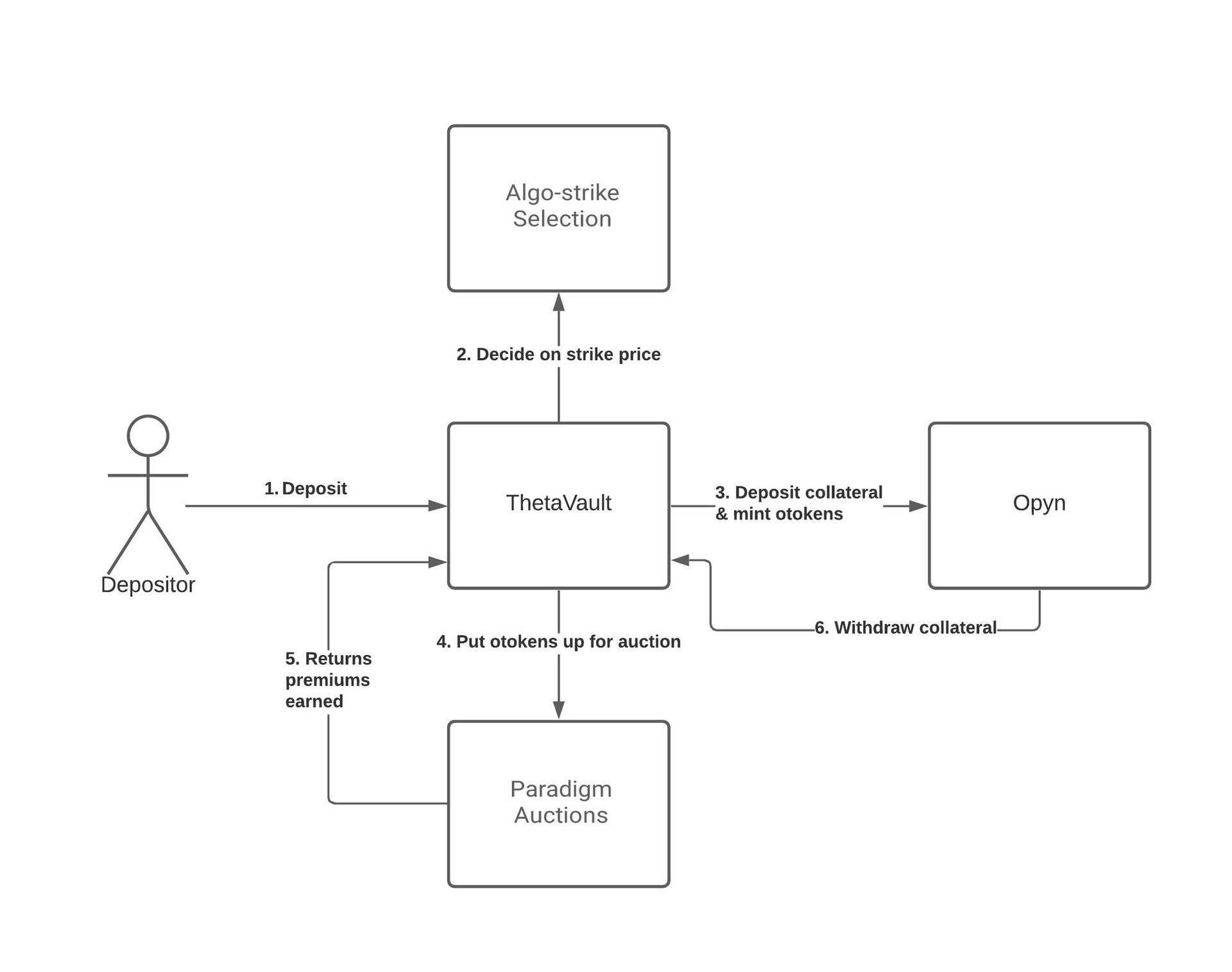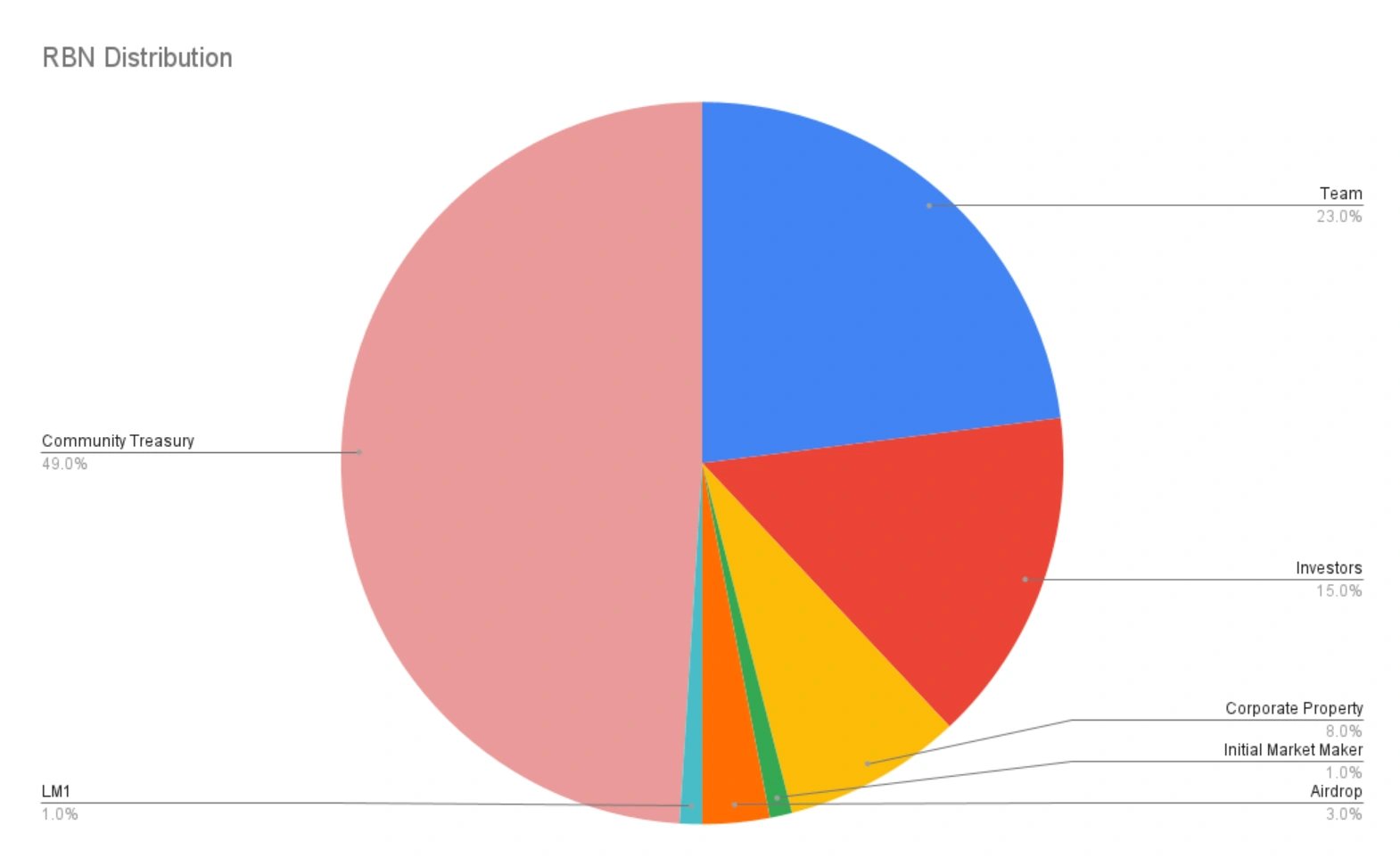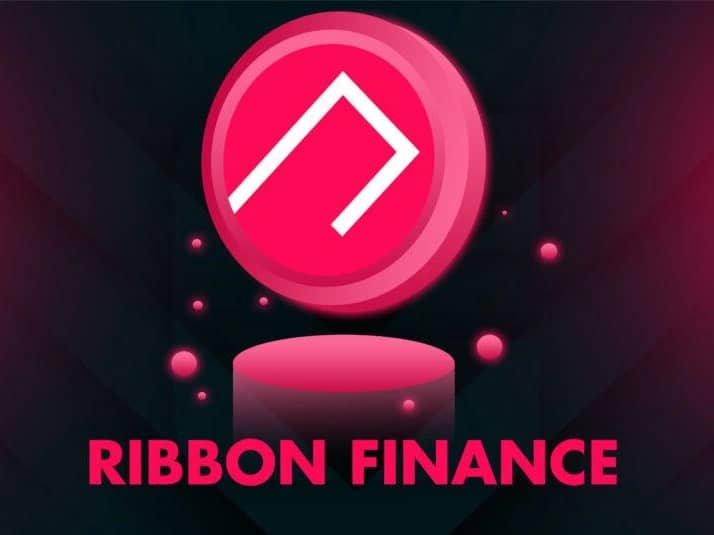위키 구독하기
Share wiki
Bookmark
Ribbon Finance
Ribbon Finance
Ribbon Finance는 사용자의 암호화폐 구조화 상품 접근을 용이하게 하도록 설계된 DeFi 프로토콜 세트입니다. 파생상품, 대출 메커니즘 및 Aevo라는 자체 온체인 옵션 거래소를 통합함으로써 Ribbon은 포트폴리오의 위험-수익 프로필을 개선하려는 개인을 위한 포괄적인 솔루션을 제공합니다. 회사의 공동 설립자 겸 CEO는 Julian Koh입니다. [1]
개요
리본 파이낸스(Ribbon Finance)는 탈중앙화 금융 (DeFi) 프로토콜로서 구조화된 암호화폐(crypto) 상품과 투자 전략을 제공합니다. DeFi 서비스는 원클릭 예치 "볼트(vault)"를 이용하여 복잡한 투자 전략을 자동화하고, 현재 시장 상황에 따른 포트폴리오 분석을 사용자에게 제공합니다. Curve나 Bancor과 같은 초기 DeFi 프로젝트와 달리, 리본의 커뮤니티 볼트는 투기적인 토큰 인센티브보다는 지속 가능한 수익 창출에 중점을 둡니다. 사용자들이 기여한 자금을 사용하여 파생상품(derivative options)에 대한 자동 투자를 용이하게 합니다. [2]
리본 파이낸스는 또한 파생상품 및 커버드콜 투자와 같은 전통적인 금융 전략을 통해 낮은 위험과 일관된 수익을 강조하는 볼트 상품을 제공합니다. 이러한 접근 방식은 금융 전문가가 고안하고 검증한 강력한 수익 전략에 대한 참여를 단순화하는 동시에 최신 DeFi 상품과 관련된 잠재적인 문제를 완화합니다. 옵션과 같은 파생상품을 사용함으로써 리본 파이낸스는 사용자 위험을 줄이고 스마트 계약이 나머지를 관리할 수 있도록 합니다. [2]
구조화 상품
구조화 상품은 일반적으로 하나 이상의 파생상품과 결합된 사전 포장된 투자 상품입니다. 이는 종종 지수 또는 증권 바스켓에 연계되며 특정 위험-수익 목표를 충족하도록 맞춤 제작됩니다. 주기적인 쿠폰 및 최종 원금과 같은 전통적인 지급 기능 대신, 이러한 상품은 발행인의 현금 흐름이 아닌 기초 자산의 성과에서 파생된 비전통적인 지급 방식을 활용합니다. [3]
Aevo
2023년 4월에 출시된 Aevo는 고성능과 주문장(order-book) 기능을 특징으로 하는 탈중앙화 거래소(DEX)이며, 전문적인 옵션 거래자의 요구에 맞춰 설계되었습니다. 포트폴리오 마진을 포함한 포괄적인 마진 시스템을 제공하며, 다양한 만기일의 옵션을 포함한 광범위한 거래 가능 자산을 지원합니다. 확장성을 위해 설계된 맞춤형 이더리움 가상 머신(EVM) 롤업에서 운영되는 Aevo는 이더리움 블록체인과의 통합을 통해 효율적인 운영과 보안을 동시에 보장합니다. [4][5]
기술
리본 테타 볼트 (Ribbon Theta Vaults)

두 가지 유형의 볼트가 있습니다. 보유 주식 매도 및 풋 매도입니다.
- **보유 주식 매도 (Covered call selling)**는 투자자가 특정 자산에 대한 콜옵션을 매도하면서 동시에 기초 자산을 동일한 양만큼 보유하는 금융 거래입니다. 이 전략에서 투자자는 이미 자산에 대한 매수 포지션을 보유하고 있으며, 추가 수익을 창출하기 위해 해당 자산에 대한 콜옵션을 매도합니다. 투자자의 기존 매수 포지션은 담보(또는 "보유 주식") 역할을 하여 콜옵션 매수자가 행사하기로 결정할 경우 주식을 인도할 수 있도록 합니다. [7]
- **풋 매도 (Put selling)**는 매수자에게 특정 기간 내에 미리 정해진 가격(행사가)으로 특정 기초 자산을 매도하거나 공매도할 수 있는 선택권(의무는 아님)을 제공하는 계약입니다. 이러한 옵션은 주식, 통화, 채권, 상품, 선물 및 지수와 같은 다양한 자산에서 거래됩니다. 반대로 콜옵션은 보유자에게 옵션 계약 만료일 또는 그 이전에 미리 정해진 가격으로 기초 자산을 매수할 권리를 부여합니다. [8]
옵션
세타 볼트는 현재 구성에서 Opyn oToken을 사용합니다. ERC-20 토큰으로서 옵션 계약을 나타내는 이러한 oToken은 특정 행사가격과 만기일을 특징으로 합니다. oToken을 보유하면 행사가격이 충족될 경우 기초 자산의 일부를 상환받을 권리가 부여됩니다. 옵션 매도 전략을 실행하려면 볼트는 oToken을 발행하고 공매도할 수 있어야 합니다. 이는 사용자의 예치된 자금을 활용하여 Opyn에 담보를 제공하고 프리미엄에 oToken을 발행함으로써 달성됩니다. 담보는 oToken 만기까지 잠겨 있으며, 옵션이 유리하게 만기될 경우 oToken 보유자에게 지급될 잠재적인 지불금을 충당하기 위한 준비금 역할을 합니다. [9]
Opyn 옵션은 현금 결제 방식이므로, 만기 시 시장가격(ITM)이 되더라도 기초 자산의 실제 이전이 발생하지 않습니다. 이러한 경우, 행사가격과 만기 시 시장가격의 차이는 예치금의 일부를 청산하여 상쇄됩니다. 또한, Opyn 옵션은 만기 시 ITM인 경우 자동으로 행사되므로, 세타 볼트의 운영 역학에 더욱 기여합니다. [9]
Ribbon Earn

Ribbon Earn은 Ribbon Finance의 첫 번째 구조화 상품입니다. 이는 세타 볼트를 보완하는 위험 특성을 가진 새로운 유형의 수익 볼트입니다. 이 상품은 다양한 시장 상황에서 일관된 수익을 제공하는 동시에 원금 보호를 우선시합니다. 대출 메커니즘 및 기타 옵션을 결합하여 Ribbon Earn은 단기 시장 변동성을 활용하여 수익을 높이는 것을 목표로 합니다. 이는 예치자가 이더리움 (ETH) 가격의 주간 변동으로부터 이익을 얻는 동시에 투자 자본을 보호할 수 있도록 하는 완전 자금 조달 전략을 사용합니다. [10]
Ribbon Lend
Ribbon Lend는 담보가 없는 기관 대출에 중점을 둔 탈중앙화 금융 (DeFi) 플랫폼입니다. 사용자는 Ribbon Lend에서 제공하는 단일 차용자, 보험 풀에 자본을 예치할 수 있습니다. Folkvang 및 Wintermute와 같은 사전 승인된 기관 차용자는 이러한 풀을 설립하고 시작합니다. 대출자는 유동성을 제공하여 매력적인 위험 조정 이자율을 얻을 수 있으며, 화이트리스트에 등록된 기관 차용자는 담보 없이 탈중앙화 자금에 접근할 수 있습니다. [11]
Ribbon Lend는 전통 금융(TradFi)과 DeFi의 요소를 결합하여 담보 없는 대출 수익률과 개별 위험/수익 선호도에 따라 선호하는 풀에 자금을 예치할 수 있는 유연성을 제공합니다. 풀의 이용률에 따라 제한되지만 사용자는 언제든지 자금을 인출할 수 있으므로 락업이 없습니다. 이 플랫폼은 추가적인 보안을 위해 오프체인 집행, 신용 심사 및 내장 보험을 통합합니다. [11]
Ribbon Earn 및 새롭게 도입된 볼트를 포함한 Ribbon의 구조화된 상품에서 발생하는 모든 대출은 Ribbon Lend 풀로 향합니다. 이 통합을 통해 Ribbon은 구조화된 상품을 신용 시설 내에서 안정적이고 상당한 대출 예치금의 원천으로 활용할 수 있습니다. 또한, 구조화된 상품을 매주 또는 블록 단위로 상환할 수 있도록 하여 플랫폼에 대한 총 가치 잠금(TVL)을 더욱 유치할 수 있습니다. [11]
Ribbon Treasury
Ribbon Treasury는 DAO(디에이오)가 자체 토큰에 대해 커버드 콜을 실행하도록 설계된 특수한 개인 Ribbon Theta 볼트를 소개합니다. 이러한 개인 볼트는 중앙 Ribbon 볼트와는 독립적으로 운영되며 각 DAO의 기본 설정에 맞춰 사용자 지정 전략을 구현합니다. 각 볼트에는 여러 가지 구성 매개변수가 있습니다: [12]
- 행사가 선택 방법: DAO는 기본 설정에 따라 행사가 선택 방법의 공격성을 결정할 수 있는 유연성을 갖습니다.
- 만기: DAO는 전략 실행 빈도를 결정할 수 있습니다. 현재 Ribbon 볼트는 자동 재롤링을 사용하는 주간 전략으로 운영되지만, DAO는 더 긴 만기를 선택할 수 있습니다.
- 프리미엄 통화: DAO는 프리미엄을 받을 통화를 선택할 수 있습니다. 예를 들어, DAO는 자금 관리 다각화 목표에 따라 USDC 또는 ETH로 프리미엄을 받을 수 있습니다.
RBN 토큰
2021년 5월 25일, Ribbon Finance는 여러 주요 용도를 가진 거버넌스 토큰(governance token)(거버넌스 토큰)인 RBN 토큰을 도입했습니다. 주요 용도는 다음과 같습니다. 프로토콜 개발 관리 및 수수료 모델과 같은 중요한 매개변수에 대한 커뮤니티 피드백 수집; 유동성 마이닝 프로그램이나 보조금과 같은 이니셔티브를 통해 제품 제작자, 사용자 및 팀을 포함한 Ribbon 이해 관계자 간의 인센티브 정렬; 그리고 기존 및 향후 출시될 모든 Ribbon 제품을 하나의 우산 아래 통합하는 것입니다. [13]
토큰 분배

- 커뮤니티 재무(49%): RBN 거버넌스는 이 할당량을 커뮤니티 재무에 배정했습니다. 유동성 마이닝 프로그램 인센티브 제공, 개발자 지원금 제공, 프로토콜 개선 이니셔티브 실행 등에 사용되었습니다. 이 중 20%는 즉시 사용 가능했으며, 나머지는 2021년 5월 24일부터 3년에 걸쳐 선형적으로 분배되었습니다.
- 현재 및 미래 팀(23%): 팀은 이 토큰을 현재 팀원과 미래 팀원에게 할당했습니다. 전체 할당량은 2021년 5월 24일부터 1년간의 클리프(cliff) 기간을 포함한 3년간의 분배 일정을 따랐습니다.
- 현재 투자자(15%): 두 차례의 프라이빗 투자 라운드를 통해 리본에 투자한 투자자들에게 이 부분이 할당되었습니다. 전체 할당량은 2021년 5월 24일부터 1년간의 클리프 기간을 포함한 3년간의 분배 일정을 따랐습니다.
- 법인 자산(8%): 리본 프로토콜 개발을 담당하는 회사가 이 토큰을 할당했습니다. 자문위원, 향후 자금 조달 노력 및 예비 직원을 위해 배정되었으며, 모두 계약 체결일을 기준으로 유사한 분배 일정을 따랐습니다.
- 레트로액티브 에어드랍 수령자(3%): 2021년 5월 25일, 리본 파이낸스는 RBN 레트로액티브 에어드랍 71 수령자를 위해 이 할당량을 지정했습니다. 이 범주의 토큰은 락업(locking) 대상이 아니었습니다.
- 유동성 마이닝 참여자(1%): 2021년 6월 16일, RGP-219의 일환인 첫 번째 유동성 마이닝 프로그램에서 참여자들에게 토큰이 할당되었습니다. 이 할당량의 토큰은 락업 대상이 아니었습니다.
- 초기 시장 조성자(1%): 세타 볼트(Theta Vaults) 운영 첫 주부터 서비스를 제공한 초기 시장 조성 업체가 이 부분에 할당을 받았습니다. 전체 할당량은 2021년 5월 24일부터 1년간의 분배 일정을 따랐습니다.
veRBN
Ribbon DAO 거버넌스에 참여하려면 사용자는 투표 에스크로된 RBN(veRBN) 또는 일반 RBN을 보유해야 합니다. 비표준 ERC-20 구현인 veRBN은 Governor Bravo 투표 시스템에서 각 계정의 투표력을 결정하는 데 사용됩니다. RBN을 잠그는 것이 일반 RBN과 달리 이전할 수 없으므로 veRBN을 얻는 유일한 방법입니다. RBN의 최대 잠금 기간은 2년이며, 이 기간 동안 1RBN을 잠그면 초기 잔액으로 1veRBN이 생성됩니다. [15]
사용자의 veRBN 잔액은 RBN 잠금 해제까지 남은 시간이 줄어들면서 점차 감소합니다. 예를 들어, 6개월 동안 잠긴 4000RBN의 잔액은 1년 동안 잠긴 2000RBN 또는 2년 동안 잠긴 1000RBN과 동일한 양의 veRBN을 생성합니다. [15]
파트너십
제타 마켓 (Zeta Markets)
2022년 2월 17일, Ribbon은 솔라나(Solana) 블록체인 상의 선도적인 옵션 프로젝트인 제타 마켓(Zeta Markets)과의 파트너십을 통해 솔라나(Solana)에서의 출시를 발표했습니다. 이는 이더리움 기반 프로젝트가 솔라나(Solana)로 처음 전환된 사례로, 이더리움 가상 머신(EVM) 계약과 네이티브 솔라나 프로그램 모두를 지원하는 애플리케이션과 인터페이스를 제공했습니다. 새롭게 도입된 네트워크 전환기 인터페이스를 사용하여 Ribbon 사용자는 EVM 및 비 EVM 네트워크 간에 자유롭게 전환할 수 있게 되었습니다. 또한 업데이트된 인터페이스는 메타마스크 또는 Wallet Connect와 같은 EVM 기반 지갑과 Phantom 및 Solflare와 같은 솔라나 기반 지갑을 지원했습니다. [18]
Perpetual Protocol
Ribbon Finance가 DAO/재무부의 자체 토큰으로 수익을 창출하도록 설계된 제품 라인인 Ribbon Treasury를 출시했을 때, 온체인 무기한 선물 거래소인 Perpetual Protocol이 첫 번째 런칭 파트너였습니다. Ribbon Treasury는 각 재무부의 특정 요구 사항에 맞는 전략을 제공합니다. 예를 들어, 이 팀은 Perpetual Protocol과 협력하여 월별 만기, 25% OTM 행사가격 선택 및 USDC로 지불되는 프리미엄과 같은 매개변수를 조정했습니다. [16]
패러다임(Paradigm)
리본 파이낸스(Ribbon Finance)는 경매 프로세스를 개선하기 위해 첫 번째 DOV 통합 파트너로 패러다임(Paradigm)과 협력했습니다. 이 협업을 통해 암호화폐(crypto) 옵션에 대한 패러다임의 유동성 네트워크를 활용하여 프로세스 흐름을 개선했습니다. 패러다임과 리본 파이낸스는 성장하는 볼트(vault)에 더 나은 서비스를 제공하기 위해 효율적인 경매 결제를 달성하는 것을 목표로 삼았습니다. 경매 흐름의 이러한 개선은 볼트 실행 중 더 경쟁력 있는 가격 책정으로 이어져 사용자 수익률을 향상시켰습니다. 새로운 경매 흐름은 2022년 5월 13일에 T-WBTC-C 볼트부터 시작하여 단계적으로 다른 볼트에도 도입되었습니다. [17]
“패러다임의 경험, 전문 지식 및 네트워크를 활용하여 DeFi 생태계가 사랑해 온 가치를 유지하면서 리본의 볼트에 CeFi 수준의 옵션 유동성을 제공하게 되어 기쁩니다” - 아난드 고메스(Anand Gomes), 패러다임 CEO.
잘못된 내용이 있나요?
